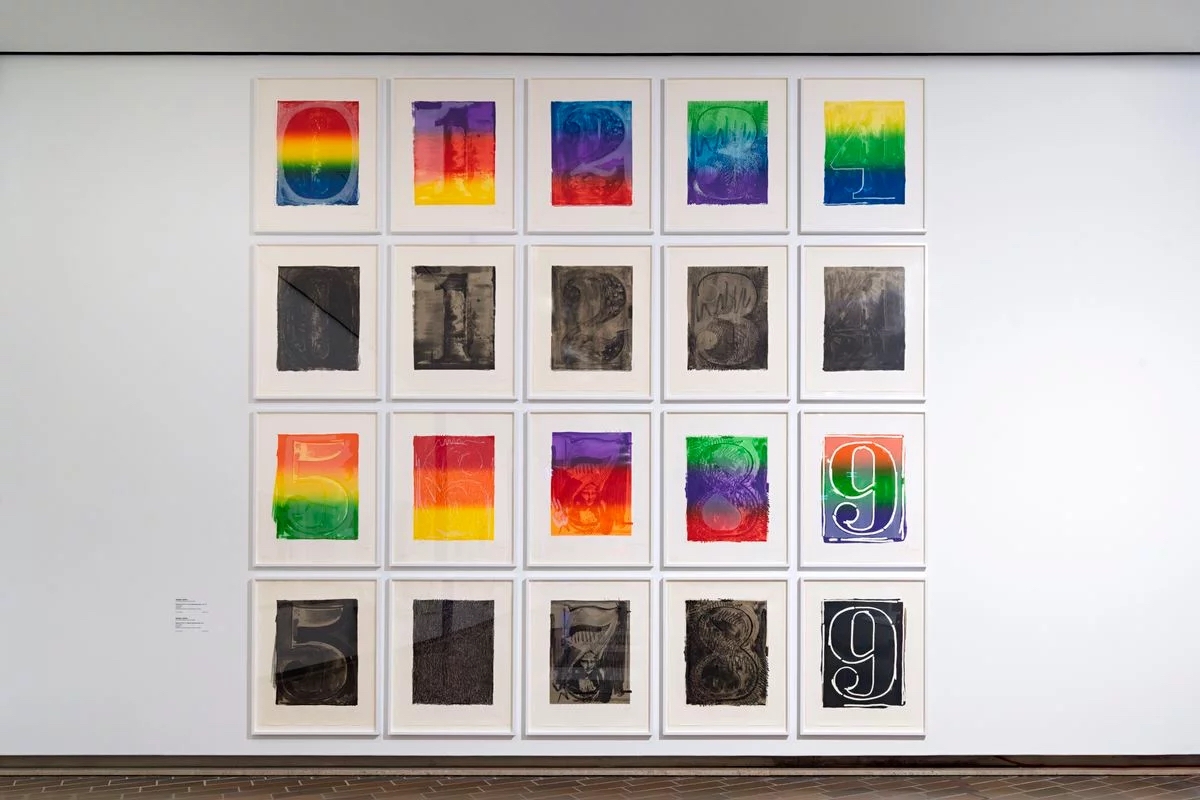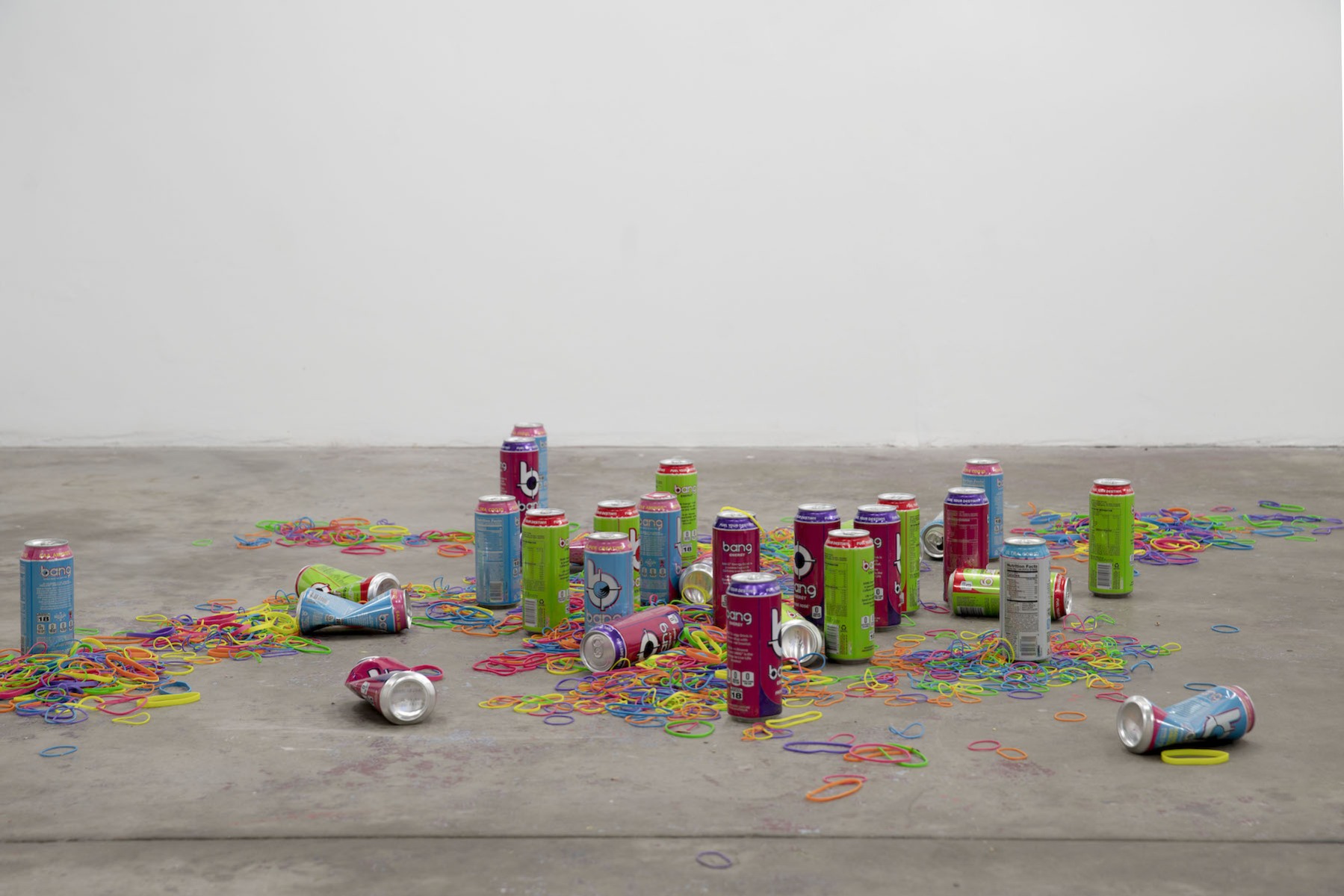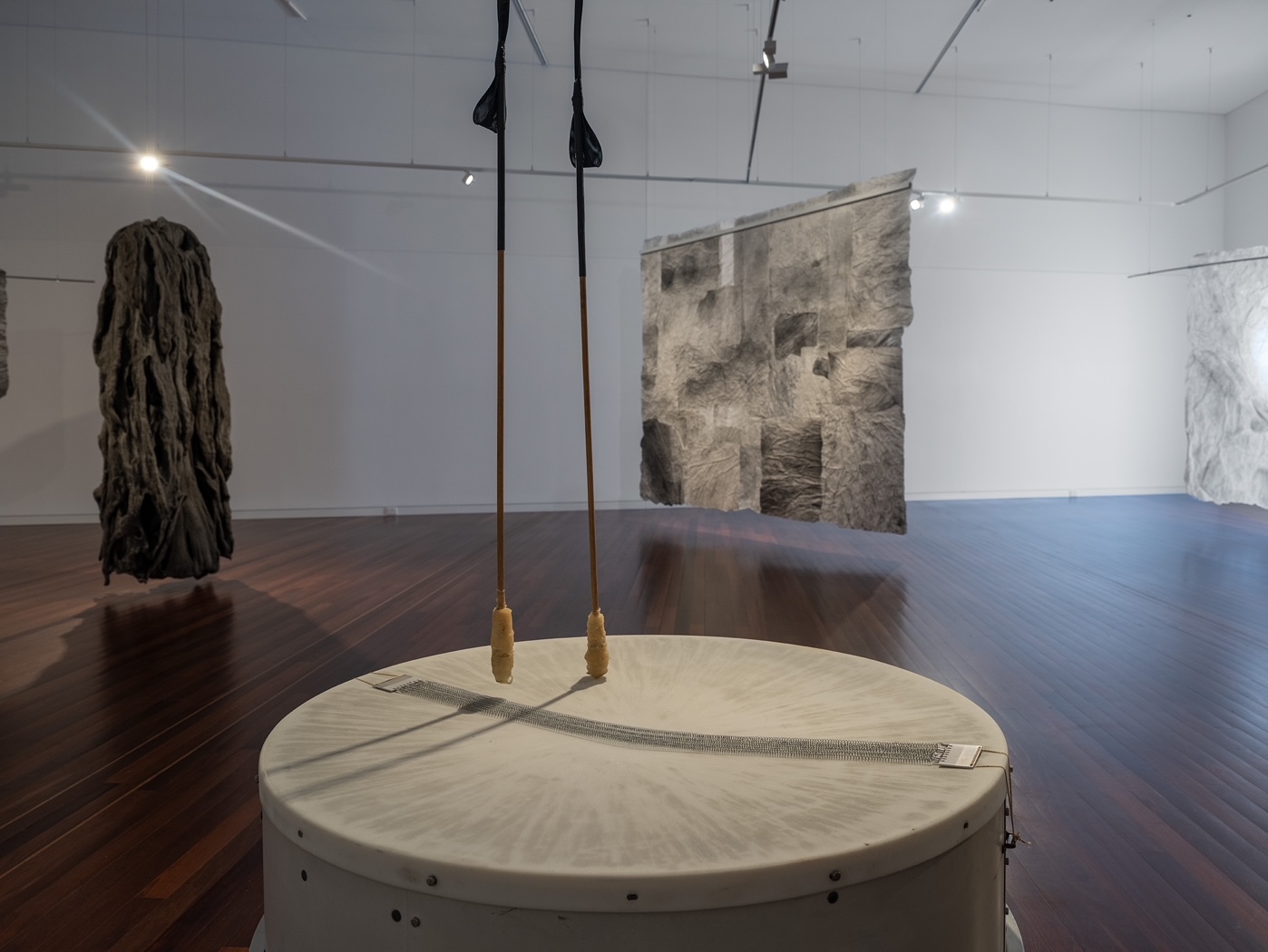The personal prevails in the art world lately. Art criticism of this nature is often condensed to a series of personal impressions—how the day progresses as the author visits a show, expressed anecdotally. Glimpses of the curatorial direction of Rauschenberg & Johns: Significant Others, down to the title, want to persuade us in this direction, to consider the artists Robert Rauschenberg and Jasper Johns primarily through their relationship. The work itself sometimes lends credence to this viewpoint too, but there is another version of the personal that pervades the assembled pieces, a collective form of the personal best described in a curiously avoided term: Pop art.
It’s a smart initiative that brings this work to Ipswich. The travelling National Gallery of Australia show is now in its third iteration and will visit two more regional galleries later this year and into the next. Collected from 1973 to 1980, the works were bought within a few years of creation, some the exact year of completion. Blue Poles may be a poster child of prescient curation (or investment, depending on your leanings) but the NGA’s foundational Director, James Mollison, was also essential to the acquisition of much larger suites of work from which Significant Others is drawn. A series of Rauschenberg acetone transfers onto fabric, the Hoarfrost Editions, have not made it from the Canberra iteration of the show and many more Rauschenberg and Johns pieces are held by the NGA, a tribute to Mollison’s foresight. This is a tightly and cohesively curated selection from a broad collection of two major artists.
How these pieces arrived here is a story with routes in dual American/Australian modernities, involving then expat Robert Hughes. The works made their way to Canberra in a formative decade for this country, both pre- and post-dismissal, but the exhibition is not imbibed with this history by curator, David Greenhalgh. The show has two sets of texts: the didactics printed in the space and a series of online resources available via a QR code. Mollison features significantly but only in the latter. A thorough acquisition history might not necessarily interest the average visitor, but it does explain how these major works of modern art can be sent around the country to regional galleries, a very notable aspect of Significant Others.
Lead reliefs series extended his interest in typefaces, and included several figurative depictions of everyday and industrial objects, a tooth brush, a light bulb. The critic smiles replaces the toothbrush’s bristles with gold teeth, a wry statement the artist made from within the New York art world of the late 1960s.
Focusing on prints, lithographic, and silkscreen works in particular, Rauschenberg’s collaborations with printer Kenneth E. Tyler stand upright in the centre of the space. Designer Aislinn King’s custom vitrines emphasize the sculptural and double-sided nature of these handmade paper pieces and deserve note, being both seamless in their construction, and the first pieces you will see upon entering the gallery. They also provide balance to a show where most pieces hang on the wall. Embedded with found images of animals, objects, and architecture, the show also features a colourful illustrated Samuel Beckett edition by Johns. Found photographs abound and multiples figure heavily, in a sort of detritus of life invoked through ‘low’ materials and imagery, like cardboard and synthetic paints and pigments.
Fundamentally, this show’s curation is interested in the romantic relationship between Johns and Rauschenberg. The works blend together in a staging that also respects the pair’s distinctness, making it worthwhile and not always self-evident to try to pick who made what. No work is included from their 1953–1961 period as a couple. The exhibition’s preface mentions homosexuality’s criminality in New York the year the pair met. It was reduced to a misdemeanour in 1955 but not overturned until 1980. Still, the majority of the work originates from the post-Stonewall 1970s, when both artists were enjoying tremendous success. The exhibition makes evident that the two are inextricably entwined, both personally and formally, but the lack of work from their period as a Romantic couple risks reducing the pair of prolific artists to their association with each other. The vibrantly colourful pieces are above all accessible, whilst still containing serious visual experimentation, a quality which will likely attract Significant Others the bulk of its attendees as it travels the country.
The exhibition suggests the presence, within the collected works, of a series of coded personal communications between the artists. I wouldn’t deny that exhaustive biographies would elucidate motifs not immediately apparent to the audience; it would be stranger if this wasn’t the case. However a discerning viewer, trained or untrained, will notice a broader relationship between the works. For example, in the corporeal x-rays of Rauschenberg’s own body, which make their way into Booster (1967), another piece made with Tyler, and John’s respective collaboration with Tyler, renditions of mundane domestic items, a toothbrush, a lightbulb from his 1969’s lead relief series. There is an interplay between things, the people using them, and the people making and observing them. This is particularly evident in their prints that reproduce everyday imagery, like John’s Color Numeral series (1968). This is the delicate and understated fact of Pop art. The work here abounds in the personal, but it is this collective personal which most empowers these boldly acquired and selected works, and what I think will most invite viewers into the work with their rapturous joy of material.
Felix Cehak is currently a PhD candidate at UNSW Art & Design.







